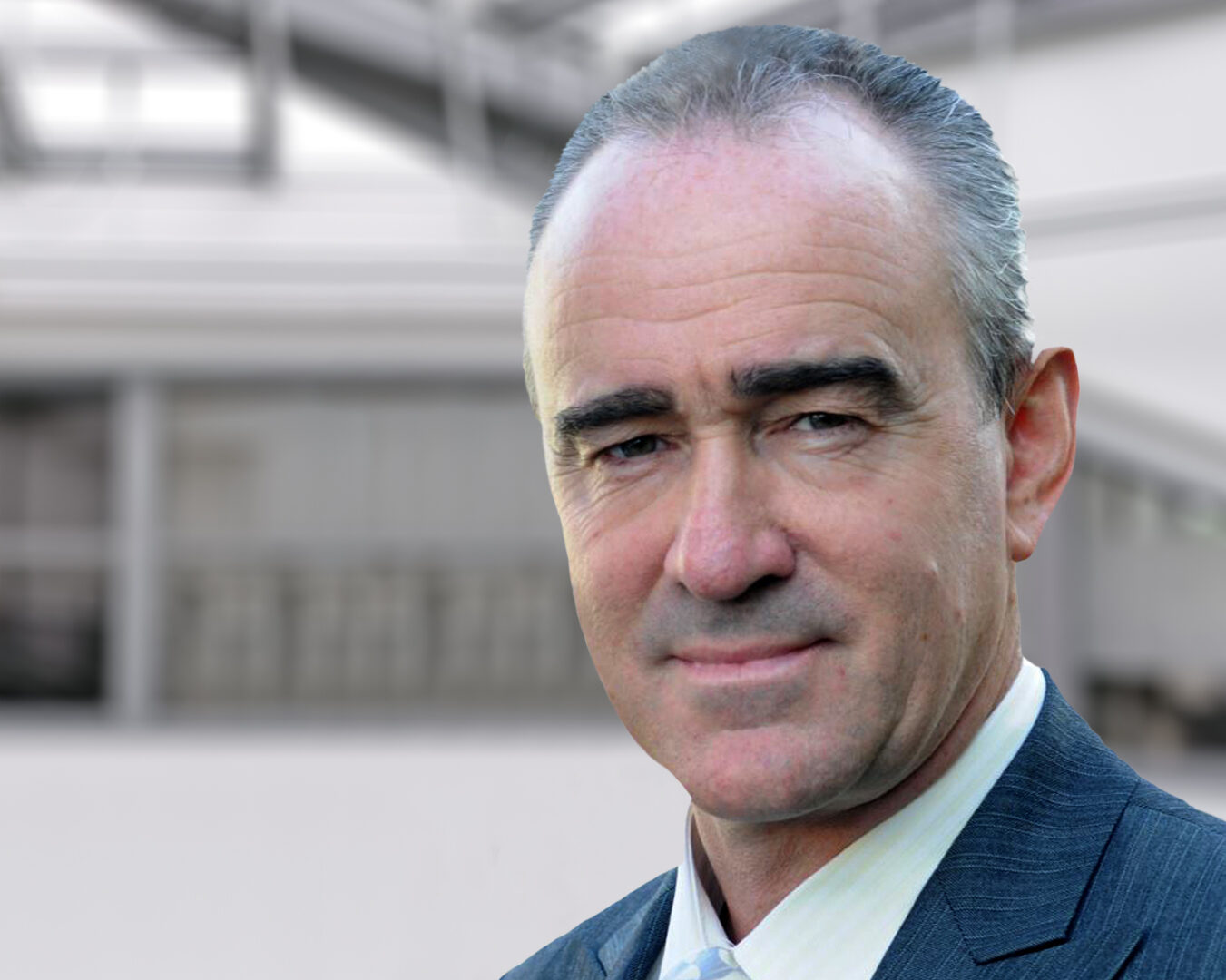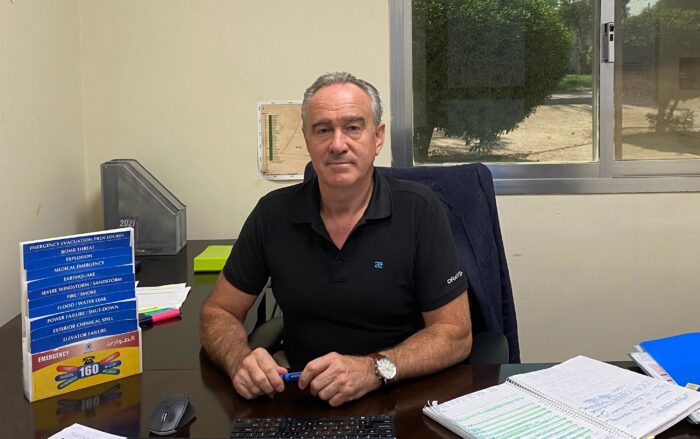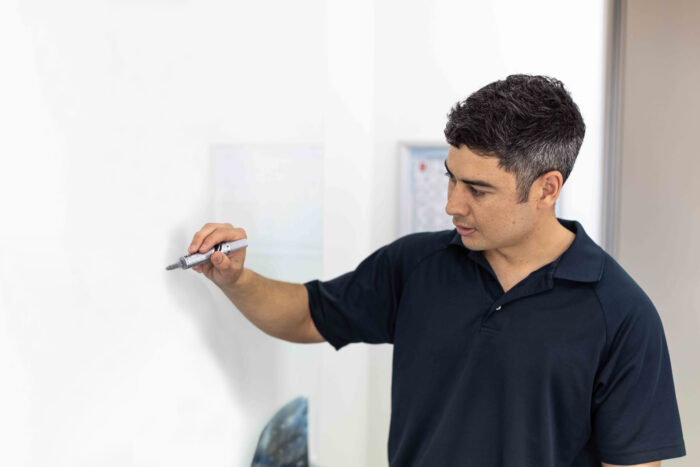Tell us about your career and what brought you to AGR
“For most of my life I’ve worked in a police force in operational and command roles. When I left after almost 28 years, I was a senior Commissioned Officer and joined AGR several years later. Safety and emergency management are in every industry, so coming from an operational policing background means I have experienced some of the most extreme cases and been exposed to worst case scenarios.
“Although I had never worked in oil and gas before starting with AGR, my background in crisis and emergency management in the police force has been a central part of my offering to the safety and risk segment of the company, and to our client base around the world. Joining AGR was a fresh start in another industry, where I could apply what I had to offer from my police background, essentially assisting organizations in preparing for the worst case and the unknown.”
What does a typical day look like for you?
“I travel to various clients’ offices and workplaces around the world to test their crisis emergency management systems, including their plans and procedures, training their teams and conducting various emergency exercises. This tests and assesses competency and capacity of their response and management systems – those emergency exercise scenarios typically address worst case events like loss of well control, blowouts, and oil spills.
“Running the safety and risk consultancy at AGR is my main priority. We have health, safety and environment (HSE) consultants in our team who work alongside us, and they are engaged globally within our clients’ workplaces, typically as on-site HSE advisors for oil and gas programs. Our key asset is our people – we only look for quality individuals when we engage them for a particular client or work scope, whether that be onshore or offshore, at a facility, or in a client’s office. They represent AGR first and foremost.
“As a result, my day-to-day involves working with a lot of different people, from dealing with our clients and consultants, to managing their needs and then deploying our consultants against the requirements of our client’s work scopes. Quite a lot of my time is also spent managing current projects and interfacing with our clients, while also undertaking business development activities and searching for new opportunities globally.”
What is so important about safety and risk engineering at the moment?
“Safety aspects and crisis emergency management are both paramount in this industry. You have to ensure that people come to work safe and they go home safe, whether that’s offshore or onshore. In my policing background, I have seen the worst case scenarios, and in this role I’m striving to ensure people are not exposed to that.
“When it comes to safety and risk engineering, there is a strong focus on standards, consistency in practices, and excellence. It’s about maintaining focus on key safety values and striving for continual improvement because it’s a lifelong process. By bringing our consultants to a client’s workplace, we assist in ensuring the workplace is safe, and help instill positive changes on the safety culture of that organization.
“We give organizations a safety check that can be daily, hourly, or even every minute to make sure that procedures are operating safely. It’s not just about compliance, it’s about being proactive with safety measures and making sure crisis emergency plans work – that you’re responding to, managing and recovering from emergency events appropriately with no long lasting effects.”
What would be the implications if teams weren’t looking for improvements in their safety and crisis management processes?
“Complacency happens a lot in this industry. Workers think it’s just another offshore job or another site, they know systems are in place and so it can be easy to become complacent. However, the ramifications of this can be huge. In the worst case, you could have catastrophic injuries to people, with long term effects on their physical and mental health.
“There’s also the reputation of the company at stake, in terms of the international media, the oil and gas community and industry peers. An organization may have had an exemplary reputation for so many years, only to be destroyed after one incident. So even the most commendable organizations need to have their guard up and not rest on their laurels. Cases like Macondo or the Montara offshore blowouts still resonate globally, so these types of disasters are what we use to improve upon and highlight the importance of safety, risk and crisis emergency management.”
What are the key challenges facing safety and risk engineering at the moment?
“There are more accountabilities now than ever before, which is a really big challenge for a lot of operators. It’s harder to get a license or permit to operate both offshore or onshore, primarily because there are a lot more regulatory obligations and controls that need to be addressed and in place, including increased scrutiny of operations before they even start.
“The levels of accountability are not just on organizations anymore. The risk management standard now is ISO 31,000, which is targeting directors of companies to be held accountable, but also spreading that accountability all the way down, not just at management level and executive level but right down to workers on the floor who are on-site.
“This raised benchmark is a positive change when it comes to safety, however, it does mean that operations are now more expensive as there are a lot more checks and balances to be completed and put in place. However, you cannot put a price on safety, or a price on the life of an individual, so organizations really do need someone like AGR to help them through developing and implementing their plans and procedures and also to deliver training.
“Overall, we bring a lot to the table, we offer significant improvements to clients’ systems which we can justify, but it’s up to the organization to implement them and proactively seek improvement. They’re ultimately the ones who face those responsibilities and accountabilities.”
What advice would you give companies looking to maintain a high level of safety and risk management?
“I think you have to be ready for the unknown and not think an emergency event won’t occur. There will be emergencies, near misses, significant risks and injuries that companies need to be prepared for. They need to be realistic and be vigilant 24/7 for the entire duration of their operations, and be able to identify and proactively act on threats or risks.
“I always advise, think of the worst case scenario first and then you can work back if you’ve got your systems in place. My philosophy is that you can’t afford to have a bad day, so let’s not make excuses for them and allow them to happen. Instead, let’s be on the front foot, think big and be proactive, and let’s plan every day to be better than yesterday going forward.”
What do you think it takes to become an expert in your field?
“In my context, no piece of paper or academic qualification makes you an expert. It goes hand in glove with a strong professional background, where you’ve demonstrated your expertise and excellence in a particular subject matter over many years. Ultimately, I believe it takes many years of dedicated service and many years working in our industry for numerous operators and in operational roles to be an expert, and then specializing in a particular area of your chosen field.”
How has safety and risk evolved in the last 10 years?
“Case studies and lessons learned in an operational debrief have become paramount. Lessons learned is very much a live process where you’re always looking at what’s just happened, could the activity have been undertaken safer or with less risk, and then implementing those safety measures next time so you never see that event occur again.
“Companies embrace this now more than they did 10 years ago, as operators are realizing that poor safety culture costs lives and money if not corrected. Rather than it being seen as an added expense, they now see it as an investment in their people, their operations, their reputation, and the environment.
“The countries that I have worked in more recently, such as Kuwait, Algeria, Vietnam, and Thailand, their processes and standards may be different but this change has certainly added another level to how they manage safety and risk compared to when I first started. Companies have gone through experiences, either directly or indirectly, reflected on the most catastrophic events that have occurred globally and have taken it upon themselves to proactively implement improvements – it hasn’t been forced upon them.”
What do you think the future looks like for this division in the next three to five years?
“Safety and risk engineering is only going to expand and improve, as it’s a key element of every client’s drilling campaign or operation. People have families, husbands, wives, sons, and daughters working in the industry, and they feel more reassured when safety is being looked at seriously.
“There will be more checks and balances in place to identify risk and be proactive about effectively mitigating and controlling it. Everyone in organizations should have a common purpose and common goals towards managing safety and risk, and that can only be a good thing as we look ahead into the future.
“For AGR, this will hopefully mean we have a larger consultancy team to service all the requirements of the clients that may need our expertise. There are a lot of business development opportunities for us, and we already have good case studies that show we have performed admirably and above the expectations. Safety and risk management is, ultimately, a growth industry – it won’t go backwards, it will only go forwards with additional requirements for the services that we offer.”






